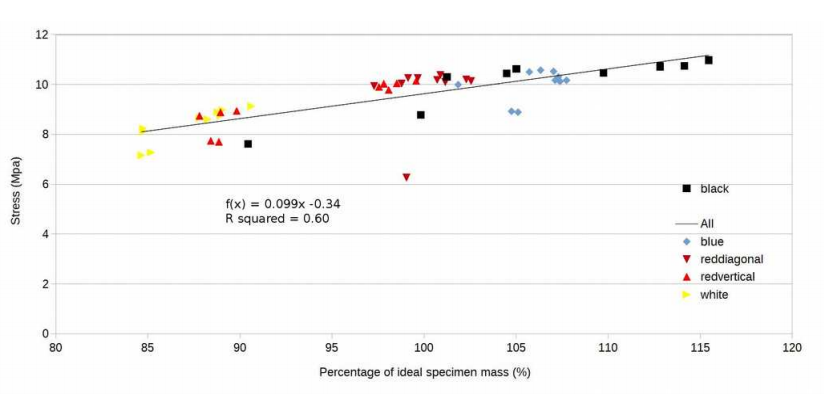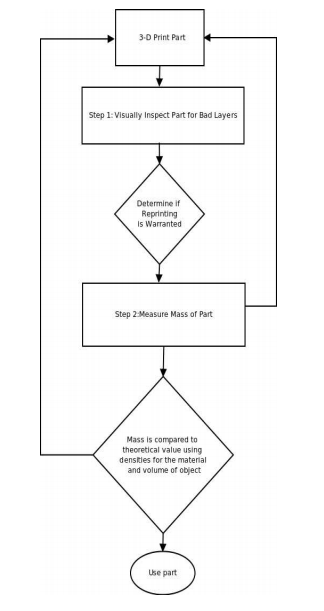Desktop FDM 3D Printing: Tensile Strength of ABS, PC, HIPS, PA and Ninjaflex
Nagendra G. Tanikella, Ben Wittbrodt, and Joshua M. Pearce, all researchers at Michigan Technological University, further explore the area of materials science in the recently published ‘Tensile Strength of Commercial Polymer Materials for Fused Filament Fabrication 3D Printing.’
Samples were tested regarding mechanical properties, fabricated on open-source RepRap-style 3D printers. With open-source hardware and the countless 3D designs available, users today have infinite options for inspiration and innovation. Materials such as PLA are popular for FFF 3D printing, offering benefits like accessibility and affordability, low melting point (150°-160° C), and the ability to offer a better alternative to ABS due to biocompatibility and biodegradability. Many other materials are available today though such as nylon, polycarbonate (PC), high-density polyethylene (HDPE), high impact polystyrene (HIPS), and more.
Previous research has demonstrated that RepRap 3D printing is comparable to typical FDM 3D printers, matching—and in some cases even outperforming—in terms of tensile strength and the same materials. For this study, the researchers used an open-source RepRap Lulzbot TAZ and the following range of materials for evaluation of tensile strength:
- Ninjaflex (five colors)
- SemiFlex (four colors)
- HIPS (five colors)
- T-Glase (five colors)
The authors 3D printed ten samples using each material and both TAZ 3.1 and TAZ 4 3D printers.
“Flexible filaments such as Ninjaflex, SemiFlex and Nylon Bridge were printed on Lulzbot 3.1 as the “flexystruder” tool head [41] was installed on it,” explained the researchers. “All other materials, which were rigid were printed using Lulzbot TAZ 4. Cura 15.04, an open source slicer, was used to generate G-code from the specimen model [43]. All specimens were printed indoors in a temperature controlled environment with 100% infill.
“Other printing parameters such as layer height, speed and custom controls were fine tuned for each material using the supplier’s recommendations as a baseline to produce acceptable print quality and uniformity.”
The majority of the materials tested well, and proportionality limits were low. Rigid material orientation was diagonal in all cases, with flexible materials fabricated in two different directions to evaluate flexibility in samples with varied orientation too. Further, orientations were 3D printed in vertical and diagonal orientations.

Stress at 60mm extension (MPa) of SemiFlex as a function of sample mass to filament mass percentage.
Testing also reflected the following:
- Polycarbonate was strongest, maximum tensile strength of 49.08 MPa
- Ninjaflex was most flexible, not breaking after extension of around 800 % (and tensile stress of 12.69 MPa)
- Nylon materials were stronger than Ninjaflex and SemiFlex
- Color demonstrated substantial impact on the amount of stress a 3D print can handle
“The study clearly demonstrates that the tensile strength of a 3D printed specimen depends largely on the mass of the specimen, for all materials. This dependence enables prosumers to solve the challenge of unknown print quality effects on the mechanical properties of a 3D printed part using a two step process to estimate the tensile strengths for a given material,” concluded the researchers. “First, the exterior of the print is inspected visually for sub-optimal layers from under or over extrusion. Then, to determine if there has been under-extrusion in the interior, the mass of samples is measured. This mass is compared to what the theoretical value is using the densities provided in this study for the material and the volume of the object.
“This two-step process provides a means to assist low-cost open-source 3D printers expand their range of object production to functional parts. The strongest material among those tested was polycarbonate with a maximum tensile strength of 49 MPa. The most flexible material was Ninjaflex, which did not break after an extension of about 800%. The tensile stress for Ninjaflex at 800% extension was over 12 MPa (average of all colors). Nylon materials were stronger than Ninjaflex and SemiFlex, and much more flexible than ABS, HIPS, T-Glase, and polycarbonate, which provides a good balance between strength and flexibility.”
Studying parameters for and resulting properties in parts created via FFF 3D printing, researchers around the world have developed new composites and other materials, experimented with printing 4D structures, and created monitoring systems.
What do you think of this news? Let us know your thoughts! Join the discussion of this and other 3D printing topics at 3DPrintBoard.com.
[Source / Images: ‘Tensile Strength of Commercial Polymer Materials for Fused Filament Fabrication 3D Printing’]Subscribe to Our Email Newsletter
Stay up-to-date on all the latest news from the 3D printing industry and receive information and offers from third party vendors.
Print Services
You May Also Like
New Business: Temporary, Migratory, & Modular 3D Printed Architecture
If we look at potentially emerging 3D printing businesses, then architecture has not been fully explored. Yes, there is a lot of house 3D printing going on worldwide. From deployable...
3D Printing News Briefs, April 19, 2025: Material Extrusion Standard, Metal Powder, & More
In today’s 3D Printing News Briefs, we’re covering a proposed standard for material extrusion, before moving on to business and metal powder. We’ll end with a commercial store’s robotic 3D...
Japan Unveils World’s First 3D Printed Train Station
Japan is now home to what we believe is the world’s first train station built with 3D printing technology. Located in Arida City, just south of Osaka, the new Hatsushima...
restor3d Raises $38M to Expand 3D Printed Orthopedic Implants
Backed by $38 million in new funding, restor3d is pushing ahead with the launch of four personalized implant lines, set to roll out in 2025 and 2026. This latest venture...






























